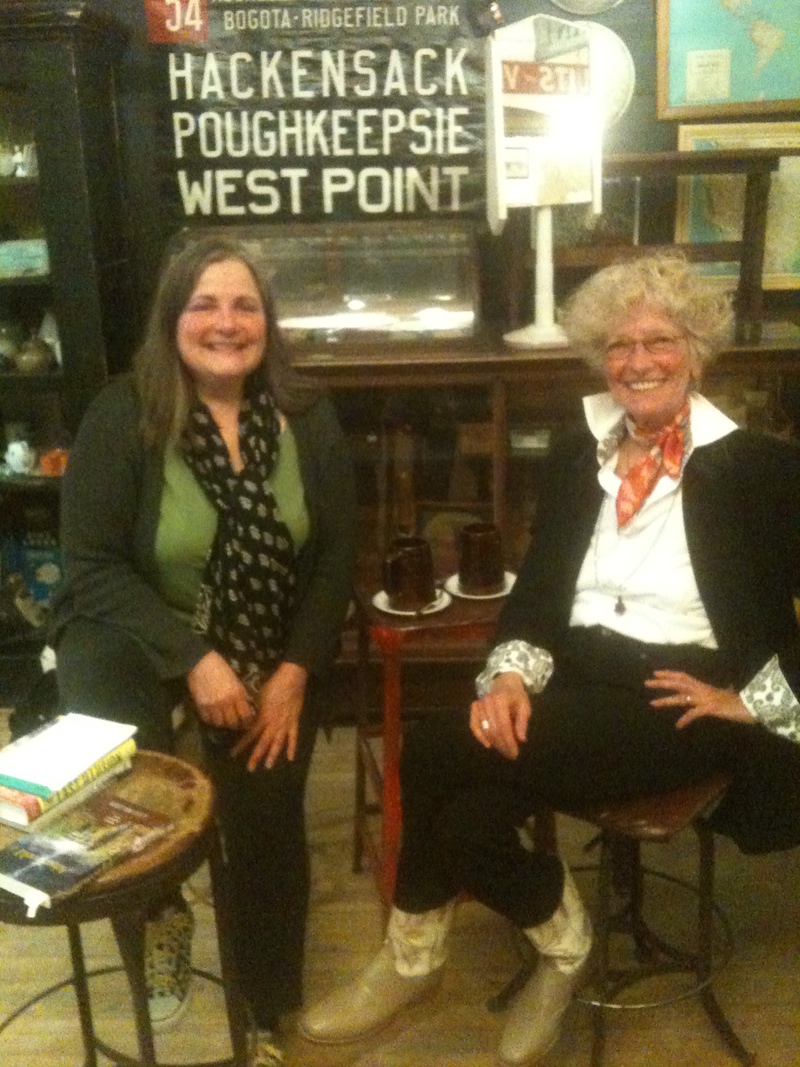April 23, 2015
 Lois Walden’s reading from her novel Afterworld was a full-throttle theatrical performance, as she summoned the voices of her title character and various others in snippets of dialogue. She described how she creates characters, which is akin to her work as an actress and singer. “I get the rhythms of speech, sound, smell, how they move, which organ they speak from, the sound of their voice, how they breathe. I find what their longing feels like.” What is the most important thing to this person? What do they want most? What gets in their way, not just from their own life but from their family background and inheritance?
Lois Walden’s reading from her novel Afterworld was a full-throttle theatrical performance, as she summoned the voices of her title character and various others in snippets of dialogue. She described how she creates characters, which is akin to her work as an actress and singer. “I get the rhythms of speech, sound, smell, how they move, which organ they speak from, the sound of their voice, how they breathe. I find what their longing feels like.” What is the most important thing to this person? What do they want most? What gets in their way, not just from their own life but from their family background and inheritance?
Lois talked about the importance of doing creative work of all sorts, “taking risks, trying to express things that are buried in the marrow of your bones.”
Asked how to proceed when a character you’re writing seems “thin” or you’re “stuck in a shallow place,” Lois suggested shaking it up by making a physical change: taking a long walk, switching from keyboard to longhand, or sitting perfectly still and waiting.
Nina suggested that if a character seems thin, you may be writing that person in too straight a line. Look for the shadow side. If the overall thrust of a character is rage, try finding a place where she’s tender or vulnerable. Characters with flaws and inconsistencies are always more dimensional.
Lois and Nina agreed that character is revealed through conflict. We learn more about people when they’re under pressure. Instead of introducing a character on an ordinary day and then having something happen to him, try jumping into mid-plot, so your character is introduced by how he deals with the unexpected.
LOIS’S EXERCISE:
Lois presented a guided meditation, starting with physical changes (close your eyes, follow your breath, uncross your legs, feel the earth beneath your feet). Create your own version of Afterworld, an objective, detached presence that observes from a distance. Introduce a character who arrives with an unresolved problem. Then add a second character who has a history with the first, and set them into dialogue with each other. (I’m paraphrasing: it was a rich and hypnotic stew, with many ingredients.)
NINA’S EXERCISE:
Describe a person you know in motion, doing or making something, in five-senses detail. Somewhere along the way, change a specific detail into something fictional. Lie a little. See where it leads you. Fiction is not about what really happened. It’s about what could happen.